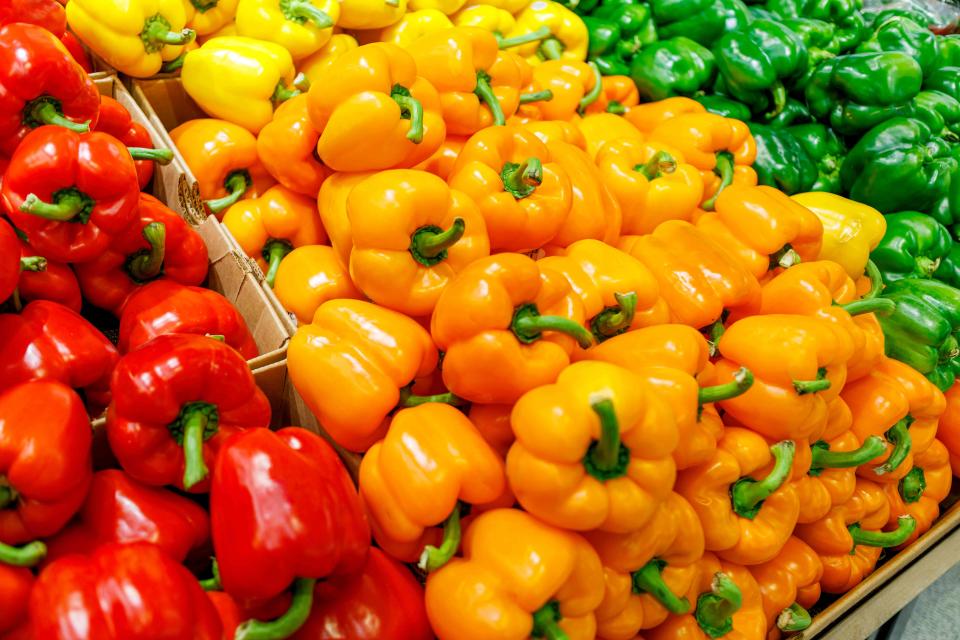Why Red Bell Peppers Are More Expensive Than Green Ones
Produce experts weigh in.

Getty Images / Grace Cary
If you’ve marveled at the bright red, orange, yellow, and green hues of bell peppers in the grocery store, then you’ve probably noticed that their cost differs based on their shade. Why are different colored bell peppers different prices, and what exactly are we paying for when we choose a red pepper over a green one?
It's All About Economics
First things first—different colored bell peppers actually all come from the same plant, so bell pepper prices correspond to their maturity. Depending on when a bell pepper is harvested, it may have a different taste and nutritional value. Red, orange, and yellow bell peppers also involve a greater degree of care and production cost, which ups their retail price.
“The price difference in bell peppers is primarily due to the time and resources required to grow them,” says Jennifer Pallian, food scientist and RD. “Green peppers are harvested earlier, so they require less time and fewer resources, which makes them cheaper. Red, yellow, and orange peppers need more time to mature, which requires more care from the farmer, and this additional investment is reflected in the price.”
The fundamentals of economics are also at play. Since green peppers are harvested earlier, there’s a greater supply and lower cost. “Red and yellow peppers are gaining popularity for their sweeter taste and nutritional value,” says Tony O'Neill, author of "Composting Masterclass" and "Your First Vegetable Garden, and Gardening with a Side of Science.”

What’s The Difference Between Green, Red, Orange, and Yellow Peppers?
Since they’re harvested at various stages of maturity, there are considerable variations in taste and nutrition among different colored bell peppers. According to the Farmer’s Almanac, the bell pepper’s growing season ranges from 60-90 days, so there’s a considerable difference in the sunshine, heat, and care various bell peppers receive.
Green peppers are usually harvested before they’ve fully ripened. “They tend to have a more grassy, slightly bitter flavor and are less sweet than their more mature counterparts,” Pallian says. As they’re not fully developed, green bell peppers do contain vitamins and minerals, but the amount pales in comparison to fully ripened bell peppers.
Yellow and orange peppers are harvested in the intermediate stages of ripening, Pallian says. “They’re sweeter than green peppers but not as sweet as red ones. They are also high in vitamins A and C, but not quite as high as red peppers.”
Red peppers are fully ripened green peppers and have a sweeter taste because they’ve had more time to develop their sugars. “Nutritionally, red bell peppers are high in vitamins A and C, thanks to their longer ripening period,” Pallian says.
Read More: How To Store Bell Peppers So They Last, According to a Farmer
Read the original article on Simply Recipes.


